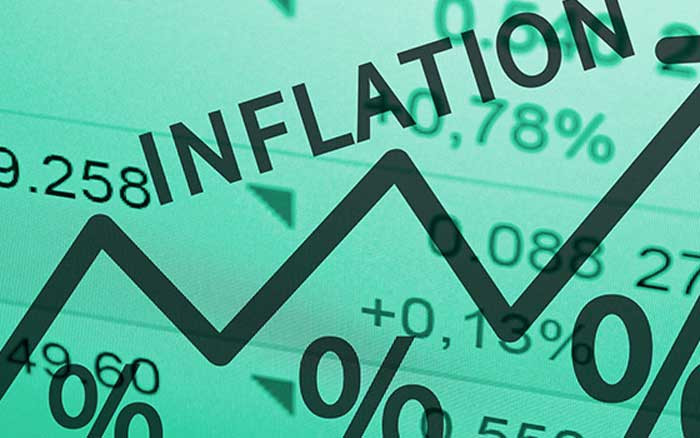
THE new year is upon us, and the festive mood has been buffeted by sombre expectations by analysts all over the world.
According to Bloomberg’s 2023 compilation of global economic outlook reports, no other year has had such high expectations for a recession like this year.
Of the 500+ reports issued by Wall Street, only 45 reportsanticipatepositive — but marginal — economic growth in various economies while the rest point to either a recession or the base case.
Given the global links between Zimbabwe and the rest of the world through trade and finance, this series lends from these global reports in painting the economic picture for the southern African country in 2023.
However, before we dive right into the outlook, we look at the road so far in order to put the future into perspective.
We take a historical look at several interconnected facets of the economy, namely (i) inflation rates, (ii) interest rates, (iii) exchange rates, (iv) the current account balance, (v) energy, and (vi) political risk as the building blocks.
While there are infinitely more variables that we can add to this list, we opine that these variables will be apt enough for investors and businesses alike.
Political risk
- Mavhunga puts DeMbare into Chibuku quarterfinals
- Bulls to charge into Zimbabwe gold stocks
- Ndiraya concerned as goals dry up
- Letters: How solar power is transforming African farms
Keep Reading
There are several economies focused on the recession, and rightly so, but we begin with our view on Zimbabwe’s political risk. The country’s political landscape will likely take centre-stage in 2023, both locally and internationally, because of the upcoming presidential elections.
By looking at past elections we observe an unmistakeable pattern of disruption that extends to the stability of the economy.
In the last four election years (2002, 2008, 2013, and 2018), Zimbabwe hadrelatively lower real GDP growth in comparison to the world economy in three out of four instances and relatively higher inflation in election years where the country was using the Zimbabwean dollar or bond notes as the official currency.
Exchange rates
Zimbabwe experienced currency stability between 2009 and 2016 when the economy was firmly dollarised. However, that stability has not been matched since the parity between the United States dollar (USD) and bond notes faltered.
The reintroduction of the Zimbabwean dollar in 2019 also failed to contain the gap between the resurrected parallel market rates and the official rates and this remains so. We also observe that the trends in the country’s exchange rates are remarkably reminiscent of trends that were observed in the years prior to the 2008 presidential elections.
In addition, we observe that, between 2000 and 2022, Zimbabwe registered average real GDP growth of 8,1% during the years it was fully dollarised compared to -3,8%,which was the case when the country used the Zimbabwean dollar as its official currency.
Inflation rates
Like trends in exchange rates, the country’s inflation ratehas been volatile since the economy moved away from the United States dollar. We observe that inflation was positively correlated to the parallel market rates between 2018 and the first half of 2022 because of the absence of a transmission effect typically initiated by interest rate changes.
However, the change in interest rates as articulated below have resulted in the repair of this transmission effect given the divergent movements in inflation and parallel market rates since the second half of 2022 in response to an interest rate hike to 200%.
Interest rates
Ever since Zimbabwe abandoned the greenback, interest rates have largely been trending upwards. However, we note that the policy rate had been sub-inflationary between 2019 and June 2022 in the name of supporting economic growth.
This inadvertently came with a side effect- speculative borrowing - which was cited as a major driver of the bulls on the stock market and runaway parallel market rates.
In the last few months of 2022, local monetary policy authorities revised interest rates to levels consistent with a Year-on-Year inflation target of 25% - 35%, and we have seen inflation rates firmly responding to interest rate changes for the first time in five years.
Energy supply
While this is an unusual topic for an economic outlook, global energy woes and local power generation have necessitated a brief note on the subject matter.
Zimbabwe’s power challenges in the last quarter of 2022 can be traced to the very low levels of usable water at the Kariba Dam that have prompted relevant authorities to limit hydroelectricity supply.
The challenges have been compounded by the incessant breakdowns at Hwange’s aged thermal power generations infrastructure. However, we have noted that, in recent months, residential and commercial areas have been going off-grid with the help of solar systems.
Current account balance
We focus on remittances and the trade balance in assessing the state of the current account.
Zimbabwe has been posting a current account surplus since 2019 that has been driven by international remittances. We opine that strides in fintech that have made it easier to move money between borders has been instrumental in the growth of remittances over the years.
The trade balance has been operating in a deficit for more than decade, but in the last five years the deficit has been on a decline. Challenges in resuscitating the country’s industrial capacity back to its former glory have been key to the persistent deficit.
- Mtutu is a research analyst at Morgan & Co. — tafara@morganzim.com or +263 774 795 854.






